#Yudaki fall
Explore tagged Tumblr posts
Text
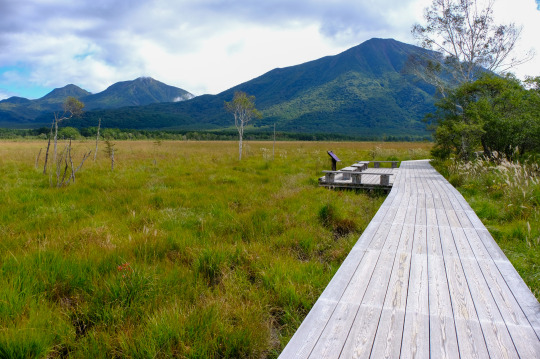
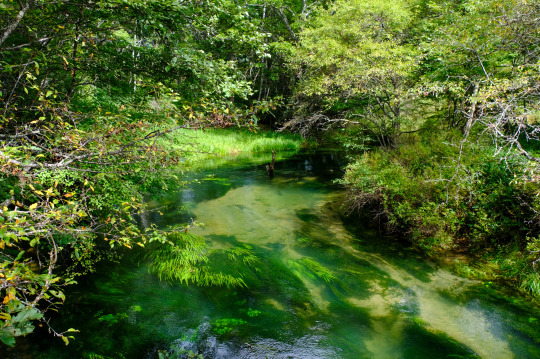

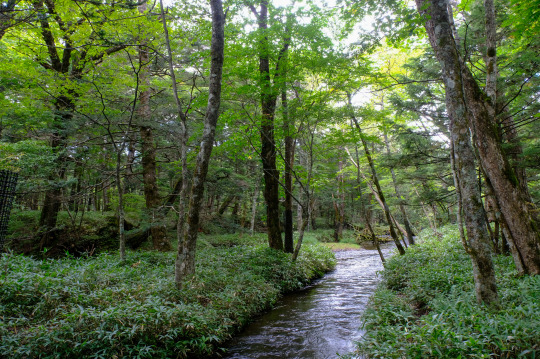
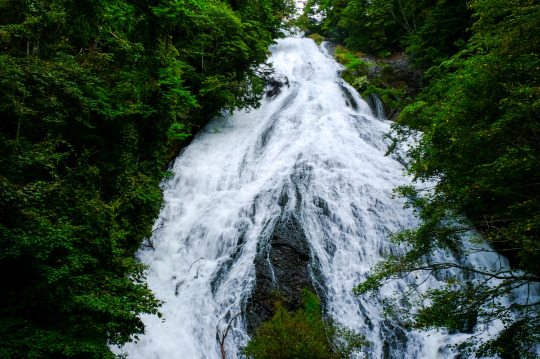

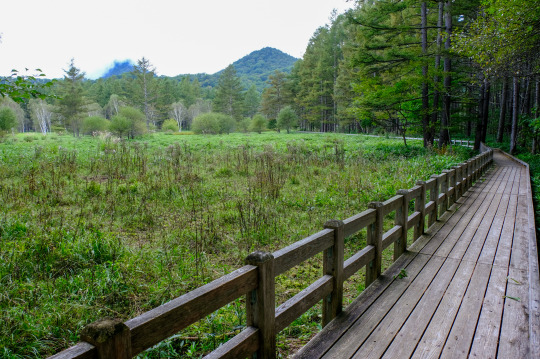

2024.9.23 戦場ヶ原、小田代原
秋直前の装い。すっかり涼しいを通り越して秋 Hiking Senjyougahara,Odashirohara. early autumn Nikko, Tochigi prefecture, Japan
#戦場ヶ原#小田代原#湯滝#奥日光#栃木県#ハイキング#Trekking#Hiking#Senjogahara#Odashirohara#Yudaki fall#Nikko#Tochigi prefecture#Japan#nature#landscape#early autumn
101 notes
·
View notes
Photo

湯滝 (Yudaki Falls), Nikko, Tochigi
1 note
·
View note
Photo

Yudaki Falls in Nikko
19 notes
·
View notes
Text
Reminiscence — A Trip to Remember
This article was first published on Medium.
It’s been a few months since my solo trip to Japan, and I still remember vividly every single moment with precise detail. I mean, how could I not? It was the most memorable trip that I ever had, not to mention, my very first solo trip. Remembering every moment brings joy and excitement to my heart, which gave me the motivation and drive to write this journal.
I wasn’t planning to travel alone in the first place, to be honest. The thought of solo travelling never did cross my mind whenever I planned an overseas trip. Part of the reason was because I felt it would be too boring without friends, without having someone to talk to. But, circumstances *psst— leave approvals* prevented me from joining my friends’ itinerary. And thus I was left with the option of planning a solo trip.
Planning an itinerary alone proved to be very enjoyable, as I realized. Researching on places to visit, planning the route and mode of transport, day-to-day schedules, it gives you a sneak preview of what kind of adventure awaits. Not to mention, I can go wherever I want to go, as my mind pleases. That’s sort of a main perk of solo travelling I guess, flexibility in plans. Few days before my flight, I switched a day in Osaka with a trip to Hiroshima, just because I suddenly had the urge to explore. It was one of the best decisions I have ever made.
My trip lasted for 10 days, travelling through Tokyo, Kyoto, Osaka and Hiroshima. Looking back at my itinerary, I wondered how I was able to follow through such a spartan schedule. Everyday was a visit to a new area, and I never did spend much of my time in the city, only at night when I’m done for the day.
Waking up at 7.30am every morning (why can’t I have the same motivation for work!), I planned to start my day early so I could maximize my time spent at places I was visiting. Having bought the painfully expensive JR Pass, I had unlimited rides on JR lines and also the shinkansen, so I was determined to capitalize on it as much as possible. Booking my shinkansen ride at 8/9 plus, I was always rushing to the station without having breakfast. Hunger wasn’t a concern to me, but missing my ride was. And yes, I have missed x number of trains throughout this trip, and 1 particular shinkansen which got me panicking for the first time on the trip.
Kamakura
Throughout my stay in Tokyo, I visited Kamakura, Nikko and Hakone. Approximately 1 hour away from the capital city, each of these places have their own iconic landmarks. My first destination was Kamakura, a suburb filled with Buddhist Zen temples and shrines. Walking on the streets of Kamakura felt different from walking in Tokyo, there was no no urge to walk briskly, no rush. Everyone around me was strolling casually along Hachiman-gu street, occasionally stopping halfway to indulge on the variety of souvenirs, sweets and snacks that the roadside shops had to offer.
I was absorbed into the 'slow-paced life’ of Kamakura, and took time to appreciate the traditional architecture of the shops, before reaching Tsurugaoka Hachiman-gu at the end of the street. At the entrance of the temple, I chanced upon a pair of Japanese newlyweds decked in Japanese wedding kimonos, having a photoshoot with a group of people who seemed to be like their families and relatives. The tourist spirit inside me sprung into life, as I whipped out my phone to take a couple of photos and an instastory. Mind you, I wasn’t alone in doing this.
Venturing into the temple, I couldn’t believe my eyes when I saw yet another pair of Japanese newlyweds! This time, the pair were in the middle of a ceremony, exchanging vows as per tradition, I guessed. Then again, Kamakura is a place famed with its shrines, so its no surprise that newlyweds would hold their wedding ceremony here. But still, to chance upon two wedding couples on the same day, I think I was very fortunate and lucky. On towards Hase, which is 3 Enoden (the local railway in Kamakura) stops away from Kamakura station, I went to visit the famous bronze Great Buddha Daibutsu.

The Great Buddha statue, Daibutsu
A majestic, magnificent statue. I stood still for a few minutes, just staring intently in awe at the great figure in front of me. The interior was open to visitors for a small fee, and there were details of the weight, the height of each part of the statue. I took a few photos, paid my respects to the Daibutsu, and headed back to Tokyo for dinner.
I met up with my Japanese friend in Kanda, he brought me to an Izakaya his friend owned. While we were having dinner halfway, there were a huge group of people in colourful traditional costumes, parading and cheering down the streets of Kanda, carrying a lavishly decorated palanquin. My friend explained that there was a festival happening— the Kanda Matsuri. Another lucky coincidence!
Although this was supposed to be a solo trip, I did meet up with some groups of friends for dinner sometimes. Honestly, I was really lucky to have company for some parts of my journey, given my talkative nature, so shout-out to those people (you know who you are ☺).
Nikko
The next day was a long, long journey into Nikko, taking the Tohoku shinkansen to Utsunomiya station, the local Nikko line towards Nikko station. I used the 2 hour travelling time to review my plans for the day — head to Ryuzu Falls, which is the start of the nature trail, towards Senjougahara Marshlands, Yudaki Waterfall, and finally Yumoto Onsen. Never would I have thought that I’ll willingly go on a nature trail myself, but hey there’s a first for everything I guess.

Ryuzu-no-taki, Ryuzu Waterfall
Alighting at the Ryuzu-no-Taki bus stop, I stared at the limitless flight of stairs in front of me. Did I mess up, I wondered? I didn’t know these stairs existed when I was researching the area! Well, that was the start of my “spartan” trail, as I dubbed it. When I reached the top, I realized that the flight of stairs was not even part of the nature trail! If I alighted one stop after, I would have skipped the stairs altogether. Oh well, lesson learnt and I continued (started) forward nevertheless.

A warning sign at the entrance of the trail — beware of bears!
Unfortunately (or fortunately), there were no signs of wildlife to be seen throughout the trail, only birds which I was unable to identify. The journey to Senjougahara marshlands was a brief one; took roughly half an hour to reach. I was greeted by the majestic view of the marshlands — its hard to believe that such a breathtaking landscape was 1400 meters above sea level! The rustling of leaves in the wind, the serenity it exudes, made the whole hiking trip worthwhile.
Fast forward to the journey back to Tokyo city, I was racing for time to catch my shinkansen to Shin-Osaka at 8.33pm, because my accommodation for the night was there. Unfortunately, I was 6 minutes late (Yes, I vividly remember) and my shinkansen had left without me. I went to inquire at the ticketing counter in Tokyo station whether there were any Osaka-bound trains left, and the earliest ride was next morning. Then the sudden realization hit me. I was left stranded in Tokyo, without any accommodation.
Hungry and angry — “hangry”, I was walking around Tokyo station aimlessly. The cons of solo travelling started to surface: I felt lost, I didn’t know what to do, nobody was around to tell me what to do, there was nobody for me to discuss with. Cold sweat, goosebumps — you name it, I felt it. Firstly I had to find a way to calm myself down. I went into a Family Mart, dragging my luggage along, bought a bottle of Mitsuya Cider (good stuff, highly recommend), and took a huge gulp.
Now that I have calmed down, it’s time to make a Plan B. I whipped out my phone, opened the Agoda app and searched for the nearest capsule hotel with a vacancy. Fortunately, capsule hotels are aplenty in Tokyo, and I had no issues finding one with a vacancy — in Kanda, just a street away from the Izakaya I had dinner at the day before. After settling down in my new accommodation and grabbing dinner at a nearby eatery, I crashed into my bed. It was a long roller-coaster ride of a day, and it was about to get even more exhausting, because I would be starting the next day with a 6.26am shinkansen to Osaka!
Miyajima, Hiroshima
For my first time stepping outside of the Kanto region, I was excited to explore more places that I could only see through the Internet. The first place I visited was Miyajima, an island off the coast of Hiroshima, western Honshu. Though Miyajima was totally out of the way for my plans, I just went with it because hey, with the power of my JR pass I can go anywhere! It was really easy to get to Miyajima also, connected by local trains from Hiroshima, since it’s a popular tourist destination that hosts the World Heritage Site: Itsukushima Shrine.
On board the JR ferry, I could clearly spot the iconic “floating” torii gate over the distance. Its tall orange pillars stuck out like a sore thumb amidst the green and turquoise landscape of Miyajima.

Spotting the torii gate over the distance
When I disembarked from the ferry, I couldn’t believe what I saw — there were deers all around! There was no mention of deers roaming around the populated areas of Miyajima when I was doing my itinerary planning, or so I believed. But, unlike their counterparts in Nara, the deers in Miyajima are not really as tame and friendly. They don’t bow unfortunately, I tried in embarrassment. There were warning billboards that advise tourists not to feed the deers as they are considered wild animals. Nevertheless, I did spot some deers approaching tourists for snacks, though in a slightly aggressive manner.

Stare-down with a deer outside the Miyajima pier
Before heading into Itsukushima shrine, I took a little detour to take a look at the floating torii gate. Luckily for me, it was low tide and sightseers were able to walk down the coastline and get a close-up with the majestic torii gate. I stood in front of the torii gate, staring intensely at its pillars. To think that this structure remained unscathed and survived the destruction brought by the atomic bomb in World War 2, it truly is a miracle indeed. The bottom part of the pillars were eroded though, because of the waves. Tourists took this opportunity to grab a selfie/group photo with the torii gate, including me.

Up and close with the famed ‘untiltable’ torii gate
After visiting the torii gate and Itsukushima shrine, I headed out for my main objective of the day: reaching the summit of Mt Misen, the highest mountain in Miyajima. Of course, I wasn’t going to start my ascent from scratch, there were ropeway services that brought tourists up to Shishi-iwa observatory, and another 30 minutes walk up to reach the summit. However simple it sounds, this walk is far from easy. Slopes after slopes, I kept leaning my body forward to push myself up these slopes.
Along the way I met a bunch of hikers, tourists and locals. When we walked past each other, I was caught off guard by their afternoon greeting konichiwa, I couldn’t react in time to give my reply, barely giving a smile and bowing my head slightly in return. Such an act of courtesy was heartwarming. Almost every Japanese people greeted me on my way up to the summit, to the point where I started to initiate the greetings myself.
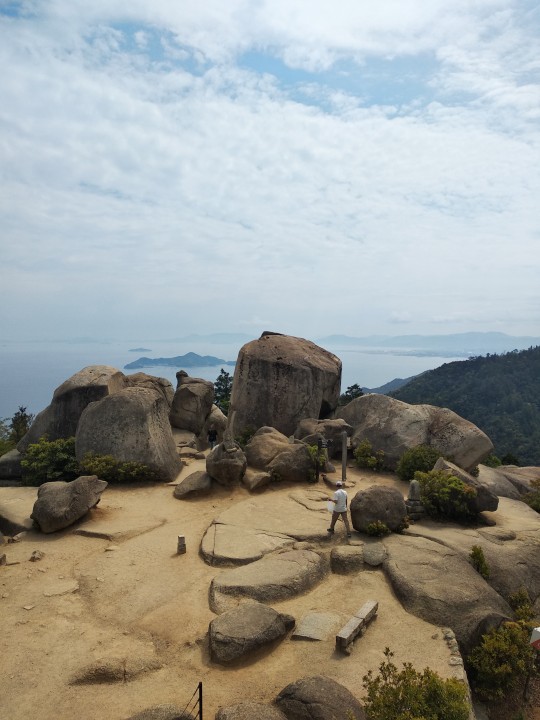
Rock formations at the summit of Mt. Misen
The view at the summit of Mt Misen was absolutely breathtaking. You could see the Hiroshima Bay in its entirety. Fresh air, clear blue skies and clouds, invigorating wind, all these made my effort (and money spent) worthwhile. Having accomplished my plan for the day, I spent the remaining afternoon browsing through Omotesando shopping street.
On a side note, if you’re planning to visit Miyajima, don’t forget to grab some Momiji Manjyu as souvenirs on your way back! They are Miyajima’s specialty, and they well deserve that title.
Kyoto
Kyoto — the land of temples and shrines, was nothing short of amazing. In this laid back town, the streets are not as bustling as its neighboring city Osaka, just peace and quiet. Also, the number of temples and shrines in this town is astonishing; for every few hundred meters you walk, there is almost certainly a temple or shrine nearby. But, each and every temple or shrine has its own story to tell, with different history and architecture. For travelers seeking out Japanese religious culture, Kyoto certainly is a must-visit.
As I was travelling solo, I could quickly decide what I wanted to do, so I tried to visit as many landmarks as I could within the two days I allocated in my itinerary. Places like Ginkaku-ji, Kinkaku-ji, Kiyomizu-dera are “mandatory” visits for tourists in Kyoto, so I prioritized those places first. I was fortunate enough to be accompanied by a friend of mine, despite a hectic schedule, if not I’ll be hopelessly lost in Kyoto’s complex bus system.
I have to say, riding on a Kyoto bus was interesting, and a tad scary. The entrance is at the back, which was supposed to be where the exit is, and vice versa. Only at the terminus do commuters board from the front. Also, I noticed that Japanese drivers like to drive very, and I mean VERY, close to one another, leaving just a few inches of gap, too close for comfort. So when the bus I was on came utterly close to a car beside (I sat at a window seat, so I could see the car being CRAZILY near), I felt very uneasy and claustrophobic.
Shortly after I arrived in Kyoto, I was told by my friend that there was a festival Aoi Matsuri, one of the three main festivals in Kyoto, happening at the Kyoto palace. Second festival that’s happened during my trip, how lucky I was, really! I pushed my plans back and headed straight for the palace. A large crowd had already gathered outside the entrance of the palace, with some photographers setting up their gear in preparation for the big event. But the first of the palanquins appeared only an hour later, and suddenly the crowd sprung into action, whipping out their phones and cameras and snapping away. Of course, that included me as well!
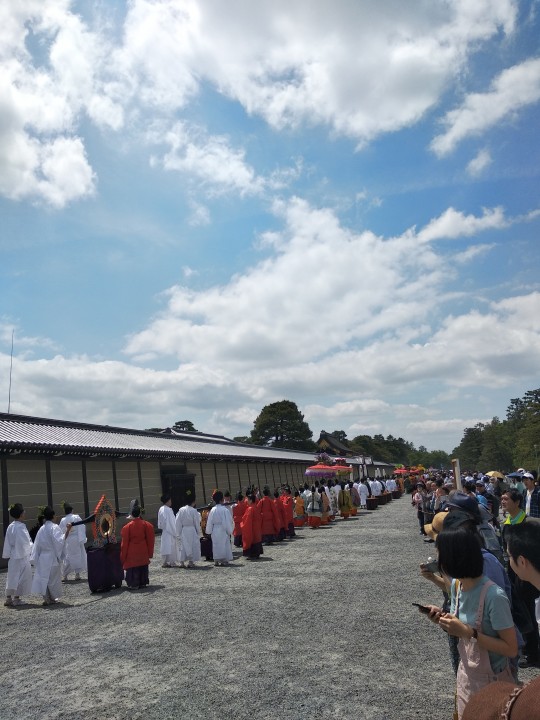
The parade heads off from the Imperial Palace
It was a grand festival all right, with horses and oxen walking beside people in ceremonial attire. A strikingly beautiful palanquin stood out most of all, with the high priestess Saio riding in it. After walking alongside the parade for a while, I decided to call it quits and head for my next destination.
The Golden and Silver Pavilions, I could only see them through the Windows wallpapers when I lock my computer. They already look magnificent digitally, but seeing them in person is truly a sight to behold.

The Golden Pavilion, Kinkaku-ji
While being surrounded by greenery and a pond, the Kinkaku-ji stands out with its striking gold. Covered in gold leaf for its exteriors, you could see the gold brilliance clearly reflected by the surrounding pond.
While the Ginkaku-ji is not as flamboyant as its golden counterpart, the Silver pavilion offers a dry sand garden with a striped line pattern situated just beside.
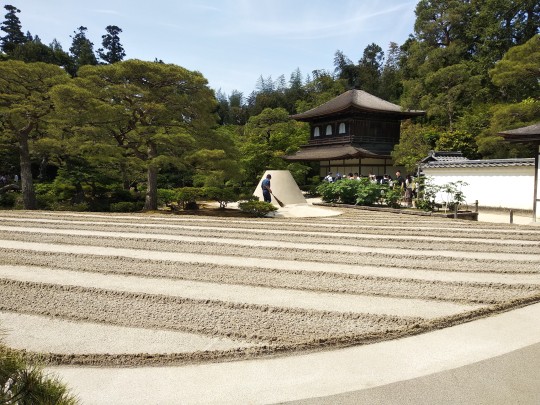
Sand garden of Ginkaku-ji
The simplicity of the garden gives off a serene vibe, I felt at ease while looking at the pavilion, also maybe because the crowd here was smaller here compared to Kinkaku-ji. After a few walks around the garden to make my money’s worth (the entrance fee is 500 yen, goodness!) I decided to head towards the most famous structure in Eastern Kyoto: Kiyomizu-dera.
Similar to the two Pavilions, Kiyomizu-dera is widely popular on various mediums. Any travel ad and tour package would feature the temple as one of the main highlights in Japan. Unfortunately the roof of the main hall was under construction when I visited, so the scenery of the whole temple wasn’t as great as before, but at least the main hall was open for visits, so it’s not all that bad.
The temple is located up in the hills, so there’s a arduous 10 minute uphill walk to expect. The walk was not in the slightest boring though, because you’ll be walking through the Higashiyama district, where a whole line of shops and cafes awaits a curious traveler. There were a lot of shops selling Japanese sweets, and a few of them offered samples to shoppers (wouldn’t have known if I wasn’t guided by my veteran friend!). There were samples for matcha tea as well! What a great pit stop in the middle of the district, perfect for a short tea break before continuing further.
At the top of the hill, at the entrance of the temple, the view was simply breathtaking. I could see the entirety of Kyoto all the way to the mountains in the west.
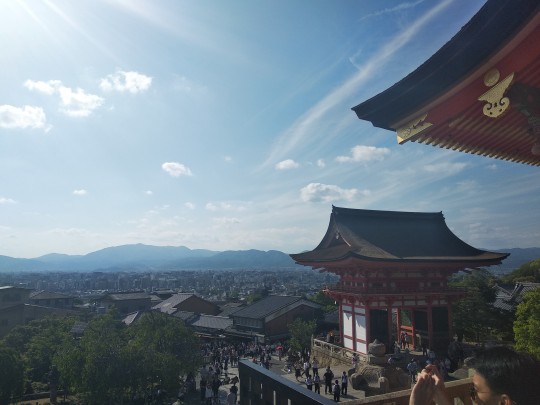
The view atop of the hills, outside Kiyomizu-dera entrance
The crowd here was really huge, probably double the size of Kinkaku-ji crowd. That’s to be expected from the most popular temple in Kyoto, with tourists flocking in to see the temple and the spectacular view.
After a full (scorching) day of temple-hopping, what better way to cool down than to visit an onsen? What I like about Japan, especially Kyoto, is the abundance and convenience of bathhouses, there’s bound to be one around your vicinity (provided you are in an urban area of course).
For the remaining 3 days of my trip, I decided to spend my time leisurely. I spent the late afternoons on an onsen spree, going to popular onsens. In total I visited 4 onsens within these 3 days (maximum health & wellness!) One onsen that left a deep impression on me was Yunessun in Hakone, the place is a water theme park combined with an onsen. Visitors can check out the unique wine/coffee/sake pools and then relax in an onsen, it really is a cool concept, I don’t regret spending half a day there!
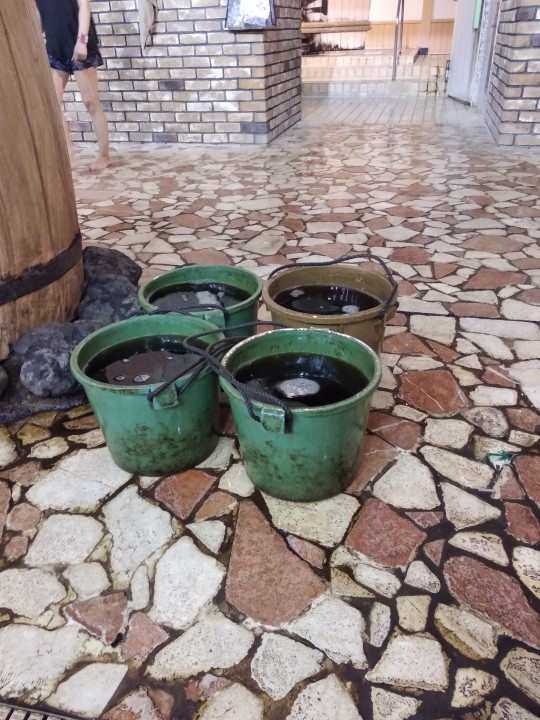
Four buckets of coffee ready for splashing people!
Afterthoughts
Honestly, I felt very skeptical about going on an overseas trip all by myself. All the what-ifs fogged my mind, while worrying about safety and the probable loneliness. However, this trip made me realize that a leap of faith into the unknown was the push I needed to understand how enjoyable and exciting journeying solo could be. From the start of the trip planning till the end, it was a phenomenal experience.
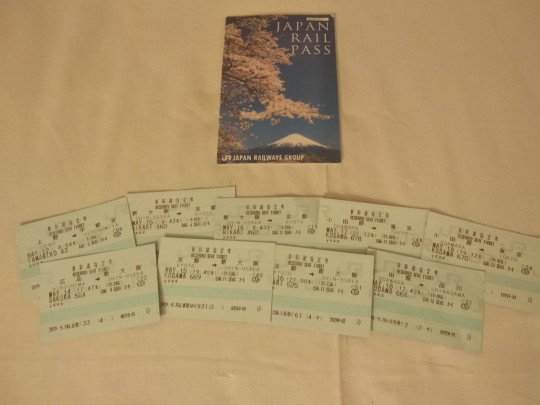
The power of the JR pass is limitless
I’m really glad that Japan was my first country to experience solo travelling (not to mention how safe Japan is), definitely would recommend Japan for avid solo-trippers! Writing this journal has spurred me on to plan for my next Japan trip already. If you have any recommendations on where/what to visit in Japan, please do share them with me! Or, if you are planning a trip to Japan yourself and would like some ideas, I’d love to share and discuss my thoughts and experiences!
Special thanks to Nurulhuda, Lee Ming Rui and Wilson for taking their precious time to proofread and provide their valuable inputs!
1 note
·
View note
Text
Things to Do Around Lake Chuzenji
Lake Chuzenji in Nikko is surrounded by beautiful forest and mountain scenery. Waterfalls, hot springs onsen, and hiking trails are some of the things you can do around Lake Chuzenji to relax in nature.
Nikko is known for its beautiful sceneries and if you love nature and likes visiting places off the beaten path, then we recommend spending some time around Lake Chuzenji and enjoy its natural surrounding and fabulous hot springs.
Where is Lake Chuzenji
Lake Chuzenji is to the west of Nikko and you can get there from Nikko Station in 30 minutes by car or 1 hour by bus. Unlike most touristy places in Japan, the area surrounding the lake is brimming with trees and mountains and not littered with hotels and shops.
If you plan on visiting Kegon Falls, the lake is right next to the falls so it’s not an extra trip you have to make. Besides the gorgeous natural sceneries, the lake and surrounding area are all over 4,000 feet above sea level so it’s a great place to get away from Japan’s summer heat.
Things to do around Lake Chuzenji
Only the east end of the lake is somewhat developed and it’s the home to Futarasan Chugushi Shrine (中宮祠), several restaurants, and a post office. Our family’s primary purpose to visit the area is to see as much landscape and nature as possible and stay away from the touristy spots. Are you ready to relax in nature? Let’s go!
Futarasan Chugushi Shrine Torii Gate
As you arrive at Lake Chuzenji from Nikko, one of the first sights you’ll see is the giant torii gate for Futarasan Chugushi Shrine. We’ll start our journey traveling through the torii gates and head west along the north shore of the lake. Our first stop will be Ryuzu Falls, then Senjogahara Marshland, and end the trip at Yuno Lake.
If it’s around mealtime, we recommend grabbing a bite at the eastern shores of Lake Chuzenji first as there aren’t too many options later on. We had donburi lunch at Kamiyama (かみやま) and it was pretty delicious.
Wagyu beef donburi
Unagi-chazuke
Shortly after passing the vermilion torii gates, you’ll soon see the dark torri gate for the Futarasan Chugushi Shrine. If you wish to climb Mount Nantai (about 8 hrs hiking round trip), the trailhead entrance starts at the shrine (500 yen fee).
Entrance to climbing Mount Nantai
Ryuzu Falls 竜頭ノ滝
The first stop of our visit is Ryuzu Falls, it is about a 10 min drive from the east end of the lake. At the bottom of the falls are a souvenir shop and a restaurant where you can enjoy food or snack while admiring the scenery. To observe the fall, there is a walking path to the right of it and it goes up alongside the waterfall.
Ryuzu Falls
There’s no cost to walk on the path next to the falls. The waterfall is unique as the water flows down uneven rock surfaces over 300 meters long, forming many mini-waterfalls.
Senjogahara Marsh 戦場ヶ原
Head north from Ryuzu falls and we’ll stop by Sanbonmastsu Park near Senjogahara Marsh. Around the marsh, there are plenty of hiking trails to enjoy beautiful views in the area. Senjogahara Marsh is also referred to as wetland or moor and its one of the highlights of Nikko National Park.
Hiking map around Senjogahara Marsh
Unfortunately, on the day we visited it rained on and off so we didn’t get to hike very far.
Yudaki Falls 湯滝
Continue heading north and another spot worth stopping at is the Yudaki Falls. It’s an impressive and powerful waterfall that’s 75 meters tall.
Yudaki Falls
Lake Yuno 湯ノ湖
The last stop on our nature itinerary is Lake Yuno. On the north shore of the lake is Oku-Nikko Yumoto hot spring resorts town with filled with many hot springs ryokans. Inside the town, you can see hot springs bubbling up from the ground.
There’s a trail that goes around the lake that takes about 1 hour to walk around. As you walk along the west side of the lake, car and modern-day noises disappear and visitors can enjoy nature as intended. Walking around, you will smell sulfur emitted by the hot spring from the town (it’s not rotten eggs).
Lake Yuno
Wooden bridge at Lake Yuno
Hoshino Resorts KAI Nikko 星野リゾート 界 日光
After a day of exploring and hiking, we rested our body and mind at Hoshino Resorts KAI Nikko. We usually don’t stay at super nice ryokans when we travel in Japan due to cost so this was an exception for us. A couple of reasons why we splurged:
We often see Hoshino Resorts images shared on social media and they look like the coolest ryokans to stay at
There aren’t too many ryokan choices around Lake Chuzenji
The view of Lake Chuzenji from the resort
We’ve shared the details of our ryokan stay below but if you are interested in just the high-level summary and our thoughts, here they are:
Service is impeccable, there were only a few guests staying at the hotel and we got full attention from the staff.
Rooms were in great condition, spacious, and super clean. The hot springs onsen was also very good.
The views of the lake were good but not great. From the images you see on the web you would think the hotel is right on the lake but it’s actually not.
Both dinner and breakfast were excellent.
Would we stay there again (if the cost was lower)? The answer is probably not. Everything about the hotel was great but it lacked warmth. Maybe because there weren’t many guests so it felt a bit lonely and too quiet for us. The whole time we stayed there we almost never saw or hear anyone else in the ryokan except during the mealtime at the dining room. If you prefer really quiet ryokan stays where you can enjoy alone time, then we would recommend staying at Hoshino Resorts KAI Nikko.
The Lobby
As soon as we parked our vehicle, the hotel staff greeted us at the entrance and handled our luggage. At most Japanese ryokans, the staff greets you at the entrance and takes care of your luggage and belongings. After checking in the luggage will be brought to your room by the staff (no tips will be accepted so don’t offer).
Hotel entry with geta (Japanese slippers) for guests to walk outside
The interior of the hotel was elegantly decorated with Japanese elements.
Lounge area
In the sitting room, you can see Mount Nantai to the right and the lake in front of the hotel.
View of Mount Nantai
The Room
The rooms are fairly large for a Japanese ryokan, with two twin-sized beds in the main bedroom and 2 additional sitting rooms.
Sitting area with sofa
The empty sitting room was converted to a sleeping room with futons for the kids at night. If you are not comfortable using the public bath, there is a large wooden bath inside the room to soak in.
Dinner at Hoshino Resorts KAI Nikko
Both dinner and breakfast were served in the dining room on the first floor of the hotel. To get to the dining room, hotel guests would walk through a glass corridor with stone path.
Walkway to dining room
The dinner was spectacular, not only was the food super delicious the dinnerware they used were first class. Even the kids’ meal was really well prepared. Typical ryokan kids meal usually only include hambagu, ebi fry, and omurice. At Hoshino Resorts KAI Nikko the kids meal included ikura, fish soup, etc.
Kid’s dinner
Dinner menu with Japanese and English translation
Dashi jelly with yuba tofu served in Nikko-bori woodware
Conger eel with egg tofu soup
3 wise monkey and sleeping cat dinnerware
Conger eel sushi, fried shrimp, pumpkin tofu, and roasted duck
Kanpachi sashimi (3 different types of sashimi were served)
Corn mochi cake with foie gras
Wagyu beef steamed in oya stone
Wagyu beef after steaming (dip in the sauce to eat)
Yuba mousse with black honey jelly
It was a memorable meal and especially happy one as I found out that my wallet was found and turned into Nikko’s police while eating.
Nikko Geta Dance at Hoshino Resorts KAI Nikko
After dinner, there was a geta performance on the stage near the dining room. After the staff explained the history of Nikko Geta (over 400 years) and how they are made, they perform a dance wearing these special shoes.
Towards the end of the show, guests are invited on stage to wear the Nikko geta and dance together to the music.
Breakfast at Hoshino Resorts KAI Nikko
Breakfast was very delicious and featured Nikko’s specialty Yuba. Pork and vegetables were cooked inside the soy milk broth as the main course besides the Japanese breakfast side dishes.
Nikko Woodcraft 日光彫
In the gift shop area of the hotel, there are several Nikko woodcraft souvenirs for sale (some of them are really pricey). Nikko’s area is known for woodwork made from a unique tool called “hikkaki” (ヒッカキ). The history of woodcraft in the Nikko area likely originated from the 400,000 craftsmen who were recruited from all over Japan to work on Toshogu back in the 1600’s. Nikko woodcraft typically features plants as the main art. You can experience carving your own Nikko woodcraft at the Nikko craft center.
Another wood feature you see in Hoshino Resorts KAI Nikko is kumiko (組子) made by specialized craftsmen. What is kumiko? It’s refined latticework interlocked in intricate patterns. This type of craft is difficult to achieve and kumiko wood patterns could be seen on windows and decorations throughout the hotel. Find out more information here.
Thank you for reading Lake Chuzenji travel guide and if you love nature and hiking, we hope you’ll find some time to visit the area. Just keep in mind winters are really cold so the best time to visit is from May through October. Besides what we’ve shared above you can also visit the former British and Italian Embassy Villa and Chuzenji Lake Observation Deck around the lake so there are plenty to do. We’ll see you next inside the caves of Oya History Museum.
Nikko Travel Guide
Edo Wonderland Nikko Edomura 日光江戸村
Kinugawa Onsen 鬼怒川温泉
Tobu World Square 東武ワールドスクウェア
Nikko Tosho-gu 日光東照宮
Places to visit in Nikko 日光
Kegon Falls 華厳の滝
Lake Chuzenji 中禅寺湖
Oya History Museum 大谷資料館
Things to Do Around Lake Chuzenji published first on https://zenramensushi.tumblr.com/
0 notes
Photo

Nikko Day 1 - Yudaki, Kodaki & Ryuzu Falls - all flowing from the Yukawa River into Lake Chuzenji. The Kegon Falls ( last photo) is Oshiri River which leaves Lake Chuzenji. Need to write it down so I don’t forget myself! (at Nikko, Tochigi) https://www.instagram.com/p/BpL3L6vABotMZCBmPXCQflsddj_3XajO4wqTeY0/?utm_source=ig_tumblr_share&igshid=5cejc115drgi
0 notes
Photo

湯滝 (Yudaki Falls), Nikko, Tochigi
2 notes
·
View notes
Photo

湯滝 (Yudaki Falls), Nikko, Tochigi
2 notes
·
View notes
Photo

湯滝 (Yudaki Falls), Nikko, Tochigi
1 note
·
View note
Photo

湯滝 (Yudaki Falls), Nikko, Tochigi
1 note
·
View note
Photo

湯滝 (Yudaki Falls), Nikko, Tochigi
1 note
·
View note
Photo

湯滝 (Yudaki Falls), Nikko, Tochigi
1 note
·
View note